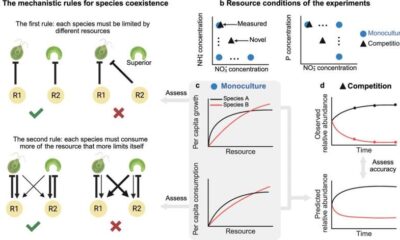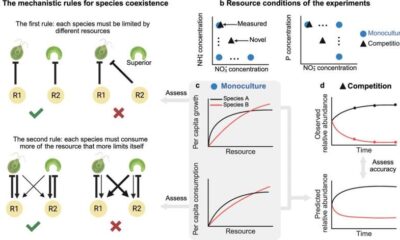Education
Researchers Reveal Surprising Limits of Human Imagination

Innovative research has unveiled a surprising limitation in human imagination, revealing that individuals can effectively track the motion of only a single object at a time in their minds. This finding, published in the journal Nature Communications on August 13, 2025, challenges long-held assumptions about the capacity of human cognitive processes.
A team of cognitive psychologists led by Tomer D. Ullman, an associate professor at Harvard University, conducted experiments to assess the limits of imaginative tracking. Their research specifically examined how well individuals can visualize the trajectory of moving objects once they have disappeared from view. Participants watched animations of a bouncing ball or two balls moving in different patterns before they vanished, testing how well they could predict where those objects would land.
The results were unexpected. Participants demonstrated proficiency in predicting the landing point of a single ball but struggled significantly when it came to visualizing two simultaneously disappearing balls. “We set out to test the capacity limits of the imagination, and we found that it was one,” Ullman stated. He expressed surprise at the findings, acknowledging that this limitation may also astonish others.
Ullman, who also leads the Computation, Cognition, and Development lab at Harvard, is particularly interested in the concept of intuitive physics—the way humans understand and interact with their physical environment. He likens mental simulations to playing a video game, where the imagination creates dynamic scenarios involving objects and their movements.
The research team included lead author Halely Balaban, an assistant professor at the Open University of Israel. Together, they devised two computational models to explain how the mind might track these invisible objects. The first suggested that multiple objects could be processed simultaneously, while the second proposed a more serial approach, moving one object at a time.
The experiments revealed that while participants could accurately predict when a single ball would hit the ground, tracking two balls proved to be significantly more challenging. “It was harder than any of us expected,” Ullman remarked, noting that the process often elicited laughter from participants due to the unexpected difficulty.
Initially, the researchers anticipated that the imagination could handle the tracking of three or four objects based on prior studies of visual perception limits. “It doesn’t feel limited. People feel like they should be able to move more than one,” Ullman noted, referencing the intuitive belief many have about their imaginative capacities.
Subsequent experiments indicated that participants performed slightly better when the two balls moved in tandem before disappearing. Yet, their performance still fell short compared to scenarios where the balls remained visible until impact. The findings suggest that when it comes to tracking objects that are no longer visible, the imagination relies heavily on a serial model, processing one object after another.
In a follow-up investigation, the researchers examined whether participants conserved mental energy by using this serial model. Even when offered financial incentives to improve their accuracy, results indicated that the limitation persisted. “We offered participants a bunch of money if they could get this right,” Ullman explained, yet the outcome remained unchanged.
These findings open new avenues for research into the intricacies of human imagination. Ullman noted that while there has been extensive study on how the mind manages to track visible objects, much less has been understood about the limitations and capabilities of the mind’s eye. “I could imagine a lot more work to do here,” he concluded, highlighting the potential for further exploration into how we visualize and simulate our surroundings.
As researchers continue to delve into the complexities of cognition, this study serves as a reminder of the fascinating yet constrained nature of human imagination.
-

 Technology5 months ago
Technology5 months agoDiscover the Top 10 Calorie Counting Apps of 2025
-

 Health2 months ago
Health2 months agoBella Hadid Shares Health Update After Treatment for Lyme Disease
-

 Health3 months ago
Health3 months agoErin Bates Shares Recovery Update Following Sepsis Complications
-

 Technology4 months ago
Technology4 months agoDiscover How to Reverse Image Search Using ChatGPT Effortlessly
-

 Technology1 month ago
Technology1 month agoDiscover 2025’s Top GPUs for Exceptional 4K Gaming Performance
-

 Technology2 months ago
Technology2 months agoElectric Moto Influencer Surronster Arrested in Tijuana
-

 Technology5 months ago
Technology5 months agoMeta Initiates $60B AI Data Center Expansion, Starting in Ohio
-

 Technology5 months ago
Technology5 months agoRecovering a Suspended TikTok Account: A Step-by-Step Guide
-

 Health4 months ago
Health4 months agoTested: Rab Firewall Mountain Jacket Survives Harsh Conditions
-

 Lifestyle5 months ago
Lifestyle5 months agoBelton Family Reunites After Daughter Survives Hill Country Floods
-

 Technology4 months ago
Technology4 months agoHarmonic Launches AI Chatbot App to Transform Mathematical Reasoning
-

 Technology3 months ago
Technology3 months agoUncovering the Top Five Most Challenging Motorcycles to Ride





















